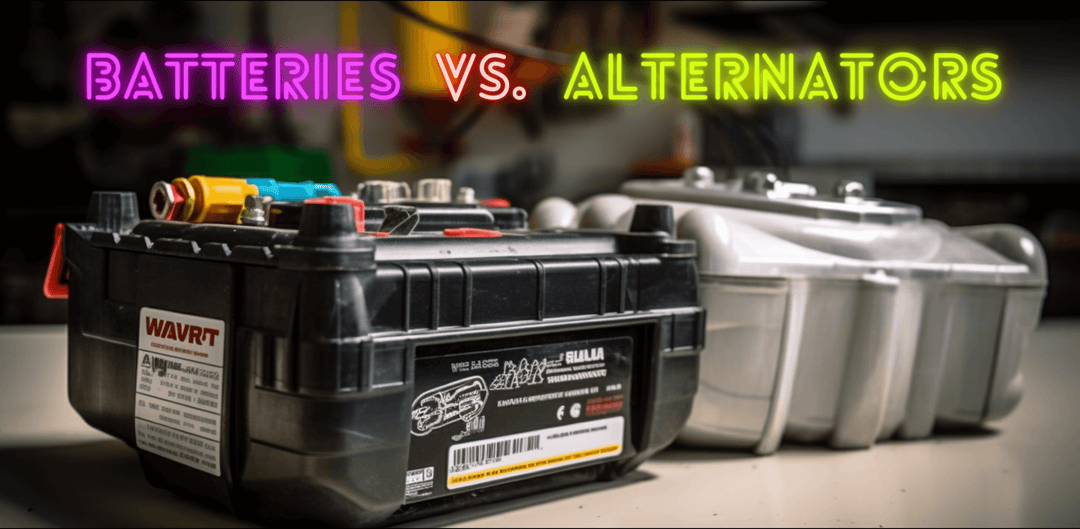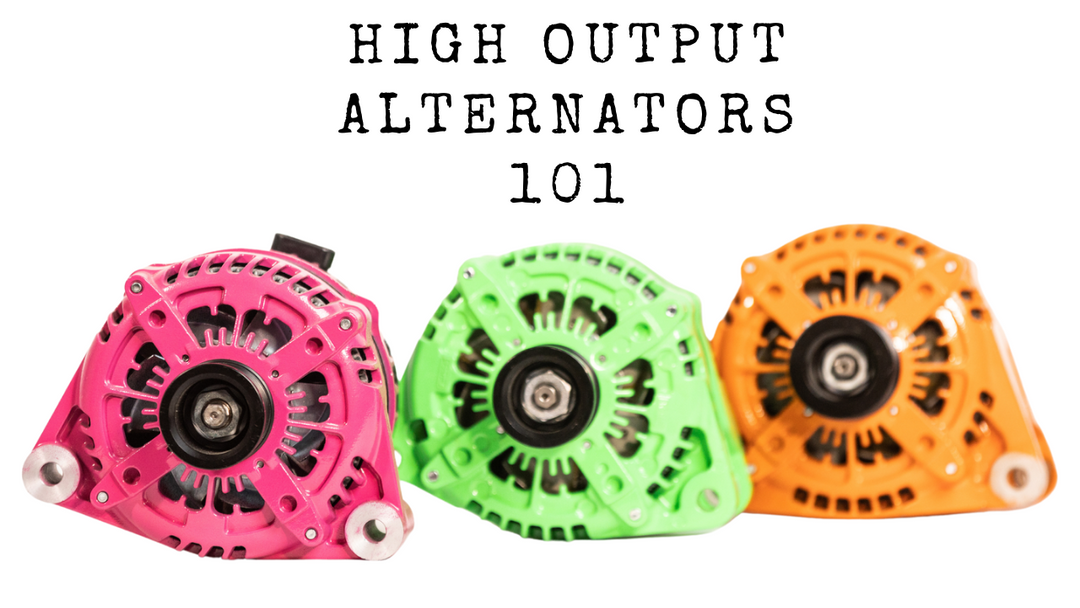How to Choose an Alternator: Can High Output Alternators Cause Damage?
When you upgrade your car audio, it's important to consider the extra power requirements that come along with a beefed-up sound system. Your factory alternator may be enough, or it might not cut it. The question usually isn't if you need a stronger alternator, but how much bigger it needs to be, and how much is too much.
How Much Alternator Is Too Much?
The good news is that replacing a factory alternator with a high output alternator, in and of itself, isn’t going to damage the rest of the electronics in your car, even if the new alternator is much, much bigger than the old one.
As an example that trends closer to the ridiculous than the likely, let's say that you determine that your new sound system, plus the preexisting power requirements of your car, add up to well over 200A. For a safety net, you decide on a 300A alternator.
Even if you manage to find a high amp alternator that’s capable of putting out a massive 300A while still somehow fitting in your engine compartment, that extra amperage will only be tapped if and when your equipment actually needs it. You can rest easy that the only downside to an alternator that's too big is that it's a waste of money, and it won't damage your electrical system.
The main caveat is that if your sound system really does require that much amperage, there are a few modifications that you need to make before installing a high amp alternator that's really that big, but they’re more to prevent power and ground cables from burning up than to protect the sort of delicate electronics that keep your car going.
High Amp Alternator Supply and Demand
If you’re worried about a high amp alternator providing too much power to your ECU, or any other component in your electrical system, you don’t need to.
The amperage rating on an alternator is basically just the amount of current that the unit is capable of putting out, not the amount it always puts out. So if all of the electronics in your car, put together, only draw 60A, then your beastly 300A alternator will only produce 60A.
The way that current works is that any given electrical component will only draw as much amperage as it needs to operate. So while a powerful amplifier might suck up 150A, you don’t need to worry about that same 150A surging into your fancy LED headlights and blowing them out.
Since amperage is a function of wattage divided by volts, it essentially works based on supply and demand — the alternator only supplies as much amperage as each component demands. The alternator generates enough amperage to meet the needs of the combined electrical system at any given time, and then each component draws its share.
In order to determine how much amperage a component is going to draw, you can divide its wattage by the voltage of the system. So basic 50-watt headlamps are only going to pull maybe 4A (50W / 13.5V), even if your big amp is drawing many times more than that.
Do You Really Need a High Amp Alternator?
Every electrical component in your car needs to draw some amount of amperage to function. If you don't make any modifications or add any additional electronics, then you'll typically be just fine with the stock alternator.
The issue is that factory alternators typically run right up against the ragged edge in terms of factory component requirements, so installing any power-hungry aftermarket equipment can lead to a lack of enough power to go around. That can manifest as flickering or dim headlights, or your engine may even die.
In some circumstances, overloading an already anemic factory alternator can even lead to early failure. And if you just replace the broken down alternator with another one that has the same specifications, the same thing will probably just happen again.
How Much Alternator Amperage Do You Need?
Most basic audio components don't draw too much amperage. For instance, a standard head unit with a built-in amp might draw less than 10A. In comparison, typical headlights are also about a 10A draw, a defroster can pull up to 15A, and air conditioning typically draws more than 20A.
In a lot of cases, you can upgrade to an aftermarket radio without worrying too much about installing a high output alternator. However, there are cases where you'll clearly end up piling on more than the factory alternator can handle.
When you start installing a bunch of aftermarket audio equipment, especially powerful amps, things can quickly get out of hand. For instance, installing a power amp that draws 70 or more amps in a car that shipped from the factory with a basic stereo, could cause huge problems if the alternator is only capable of putting out 60A to begin with.
Factory electrical systems have differing tolerances, but if you're planning on upping the requirements by more than 10 or 15 percent, then a high output alternator may be a good idea.
If you just need a little extra juice, a car audio capacitor may be a better choice.
Necessary High Amp Alternator Electrical System Modifications
Although the individual electronic components in your car won’t be damaged by a big alternator, there are two things that might be: the alternator power lead and the ground strap or straps.
Since a high amp alternator will be putting out a lot more juice than the factory unit, and your power and ground cables were chosen with the OEM unit in mind, these cables might not be big enough.
When you install a high amp alternator, or when you have someone else install it, you should consider replacing both the ground straps and the power cable that runs from the alternator to the battery with heavier gauge cables.
Although it is possible to calculate roughly the right size based on the maximum amperage you’ll be dealing with, a good rule of thumb is to just go with the thickest gauge that will work in the application.
You can’t really go too big in this case, and the thicker the cables, the better off you’ll be — especially if you do go with that monster of a 390A alternator.
written by Jeremy Laukkonen




